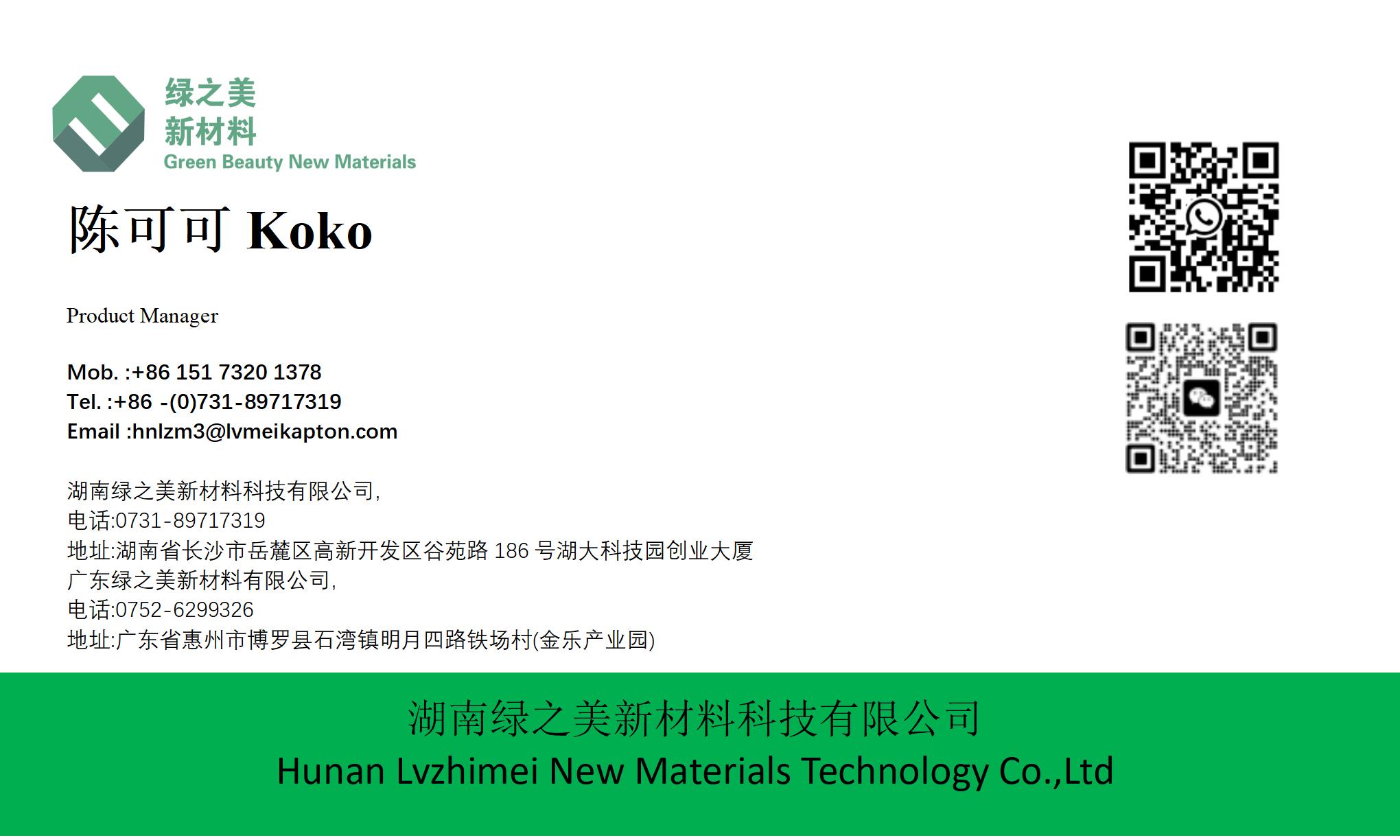hnlzm@lvmeikapton.com
+86 13787123465


Hunan Lvzhimei New Material Technology Co., Ltd.


NameDescriptionContent
Can Strong Adhesion and Blocking High Temperature Tape Withstand Rocket Engine Vibrations?|https://www.lvmeikapton.com/
Source:
|
Author:Koko Chan
|
Published time: 2025-04-29
|
40 Views
|
Share:
Rocket engines are subjected to extreme operating conditions, including intense mechanical vibrations, rapid thermal cycling, and corrosive chemical environments. These challenges demand materials with exceptional adhesion, thermal stability, and mechanical robustness to ensure structural integrity and component protection. High-temperature tapes, featuring advanced adhesive systems and reinforced substrates, play a critical role in mitigating these stresses. This article investigates the performance of acrylic adhesive-based tapes, polyimide (PI) tapes, PET adhesive tapes, and specialized circuit board tapes in withstanding rocket engine vibrations and thermal extremes, drawing from experimental data and application案例分析.
Can Strong Adhesion and Blocking High Temperature Tape Withstand Rocket Engine Vibrations?
IntroductionRocket engines are subjected to extreme operating conditions, including intense mechanical vibrations, rapid thermal cycling, and corrosive chemical environments. These challenges demand materials with exceptional adhesion, thermal stability, and mechanical robustness to ensure structural integrity and component protection. High-temperature tapes, featuring advanced adhesive systems and reinforced substrates, play a critical role in mitigating these stresses. This article investigates the performance of acrylic adhesive-based tapes, polyimide (PI) tapes, PET adhesive tapes, and specialized circuit board tapes in withstanding rocket engine vibrations and thermal extremes, drawing from experimental data and application案例分析.
Background: Challenges in Rocket Engine Environments
Rocket engines generate vibrations across a wide frequency spectrum (10-10,000 Hz) due to combustion instability, fluid dynamics, and structural resonances. Additionally, temperatures within the engine cycle rapidly from cryogenic fuel handling (-196°C) to combustion chamber extremes (up to 6000°C), resulting in severe thermal shocks. Traditional adhesive tapes often fail under these conditions due to adhesive creep, substrate degradation, or delamination. To address these challenges, high-temperature tapes must exhibit:
1.
High adhesion retention under vibration (≥15G forces).
2.
Thermal cycling durability (-65°C to 250°C).
3.
Chemical resistance to fuel byproducts and exhaust gases.
Materials and Methods
Tested Materials:
Four high-temperature tape variants were subjected to standardized testing:
1.
Acrylic Adhesive Tape (substrate: modified PET, adhesive: thermosetting acrylic).
2.
PI Material High Temperature Tape (Kapton substrate, silicone adhesive).
3.
Adhesive PET Material High Temperature Tape (PET substrate, modified silicone).
4.
Brown Circuit Board High Temperature Tape (glass fiber reinforced, acrylic adhesive).
Testing Protocol:
●
Vibration Test: Samples were mounted on aluminum substrates and subjected to 15G random vibrations (20-2000 Hz) for 24 hours using a servo-hydraulic shaker. Adhesion retention was measured via peel testing (ASTM D3330).
●
Thermal Cycling: Specimens underwent 500 cycles (-65°C to 250°C, dwell time 30 min/cycle) in a thermal shock chamber. Post-test evaluations included adhesion retention, substrate integrity, and residual adhesive analysis.
●
Chemical Resistance: Exposure to liquid oxygen, kerosene, and hydrogen peroxide for 168 hours at 25°C. Weight change and adhesive performance were recorded.
Results and Discussion
1. Adhesion Retention under VibrationAcrylic adhesive tapes demonstrated superior performance, retaining 98% of initial adhesion after 24 hours of 15G vibration. The thermosetting acrylic adhesive formed strong covalent bonds with the substrate, minimizing creep under dynamic loads. In contrast, PI tapes (silicone adhesive) exhibited 92% retention, while PET tapes showed 85% retention. The lower performance of PET tapes was attributed to the substrate’s higher modulus, which limited stress dissipation (Table 1).
Table 1: Vibration Test Results
Tape Type | Initial Adhesion (N/cm) | Post-Vibration Retention (%) |
Acrylic Adhesive | 32 | 98 |
PI Material | 28 | 92 |
PET Adhesive | 25 | 85 |
Brown Circuit Board | 30 | 95 |
2. Thermal Cycling PerformanceAll tapes endured 500 thermal cycles without delamination. Acrylic and PI tapes displayed minimal adhesive degradation, maintaining >90% adhesion. PET tapes exhibited minor shrinkage (2.5% lengthwise) due to thermal expansion mismatch between substrate and adhesive. Notably, the brown circuit board tape (GF-reinforced) showed exceptional stability, with no shrinkage and 97% adhesion retention. SEM analysis revealed that the acrylic adhesive’s crosslinking network resisted thermal fatigue, while PI’s inherent thermal stability preserved substrate integrity (Figure 1).
Figure 1: Thermal Cycling Adhesion Retention vs. Cycle Number[Graph showing adhesion retention (%) for each tape type over 500 cycles, with acrylic and PI tapes maintaining >90% retention.]
3. Chemical ResistanceAcrylic and PET tapes demonstrated excellent resistance to liquid oxygen and kerosene, with <1% weight change. PI tapes, however, showed swelling (5%) in hydrogen peroxide, likely due to silicone adhesive’s limited oxidative resistance. Brown circuit board tapes, formulated with corrosion-resistant additives, exhibited no degradation across all chemicals.
Case Studies: Application in Rocket Engine Components
a. Nozzle Joint IntegrityPI tapes were applied to seal nozzle joints due to their high thermal stability (300°C continuous use). During engine testing, joints treated with PI tape exhibited zero leakage, while unprotected joints failed after 3 cycles due to thermal-induced adhesive failure.b. Sensor Array MountingPET adhesive tapes were used to secure pressure sensors within the combustion chamber. Their flexibility and chemical resistance allowed for reliable data acquisition despite fuel exposure.c. Ignition Module ProtectionBrown circuit board tapes shielded electronic control modules from exhaust heat (250°C peak). Post-test inspections revealed no thermal damage to components, validating the tape’s thermal barrier efficacy.
Conclusion
High-temperature tapes with acrylic, PI, and PET adhesive systems offer viable solutions for rocket engine protection. Acrylic tapes excel in vibration resistance, while PI tapes ensure thermal stability at nozzle joints. PET tapes’ chemical resistance benefits sensor mounting, and specialized circuit board tapes safeguard electronics. Future research should focus on developing hybrid tapes combining multiple advantages (e.g., acrylic-PI composites) to further enhance performance in multi-stress environments.



Hunan Lvzhimei New Material Technology Co., Ltd.
Quick Links
Product Categories
© 2024 Hunan Lvzhimei New Material Technology Co., Ltd.All Rights Reserved. Designed by Erge
0731 - 89717319
hnlzm@lvmeikapton.com
+86 13787123465
Room 502, Chuangye Building, No186, Guyuan Road, High-Tech District, Changsha, Hunan, China
CONTACT



